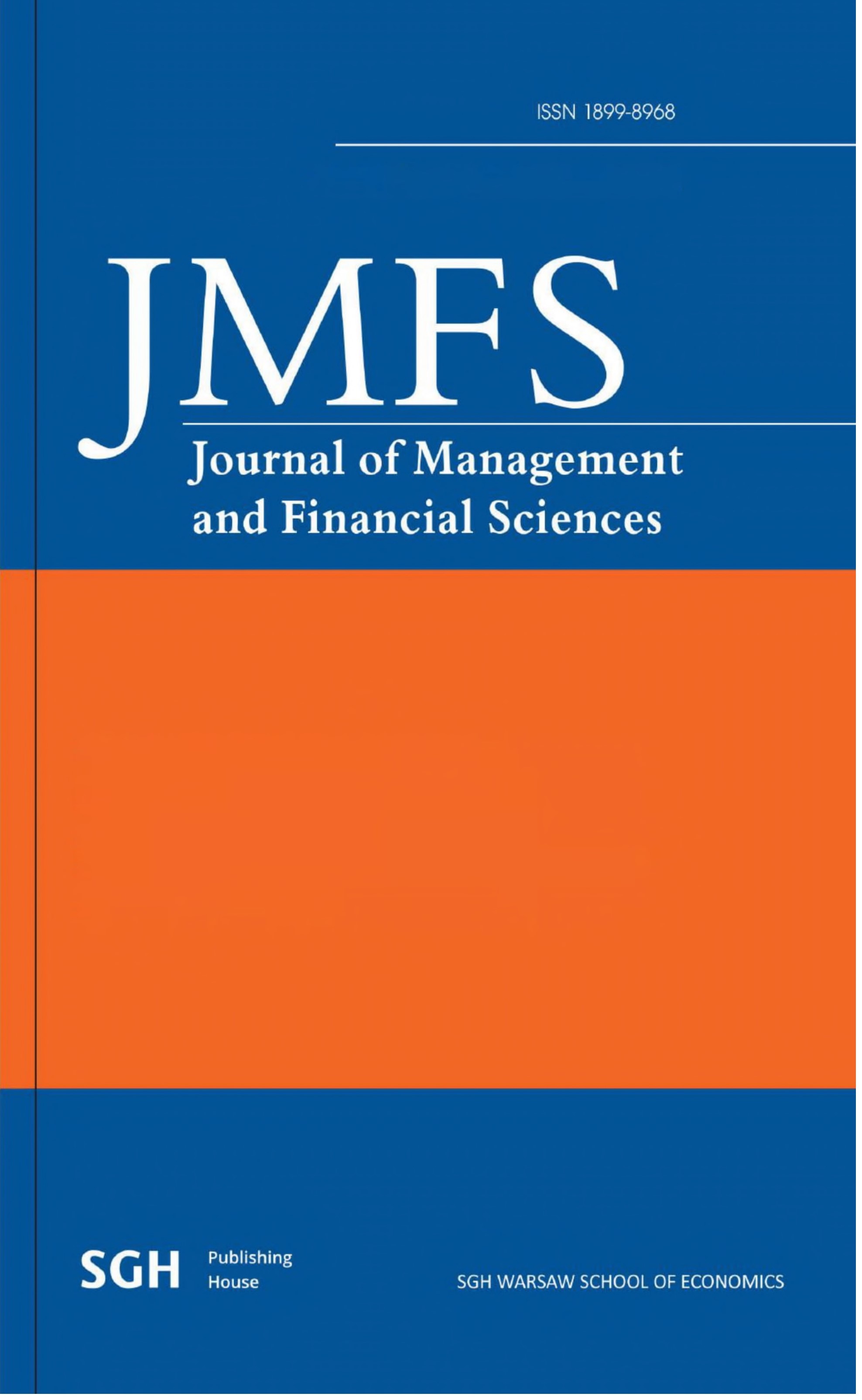Key determinants of bond issue terms on the Catalyst bond market in 2009–2019
Main Article Content
Abstract
The first objective of the article was to determine what makes Polish companies decide to issue bonds (instead of financing themselves with loans or other sources). The second objective was to examine the key factors determining the interest rate of bonds. The research was based on public bonds, listed on the Polish Catalyst bond market. It should be emphasised that this is the first study of this kind on the Polish bond market covering both the issue characteristics and the financial attributes of the issuers. Firstly, in order to determine which parameters have a real impact on Polish companies’ issuance decisions, a probit model was created basing on parameters such as the age of the company, its size, asset growth dynamics, leverage, ROA, and investments in fixed assets.
Secondly, in order to determine what the real interest rate of the bonds depends on, using linear regression and the least squares method, we examined the key parameters that issuers could consider as leading in determining the future estimated interest rate of the bonds, such as rating, issue collateral, issue size, and maturity.
In our research we found that the size of a company and the level of its financial leverage are the main incentives for Polish companies to issue bonds. Moreover, the size of the issuer and the level of its financial leverage are the key factors determining the bonds margin.
Downloads
Article Details
References
1. Accornero, M., Russo P. F., Guazzarotti, G., Nigro, V. (2015). First-time corporate bond issuers in Italy. Questioni di Economia e Finanza, Banca D’Italia, 269, pp. 1–35.
2. Denis, D. J., Mikov V. T. (2003, Oct). The Choice Among Bank Debt, Non-Bank Private Debt and Public Debt: Evidence from New Corporate Borrowings. Journal of financial Economics, 70 (1), pp. 3–28.
3. Martysz, C. B. (2020, Sept). Polski rynek obligacji nieskarbowych – nowe zasady rejestracji obligacji oraz analiza rejestru zobowiązań emitentów. Finanse i prawo finansowe,, 3 (27), pp. 91–107.
4. Mizen, P., Tsoukas, S. (2014). What promotes greater use of the corporate bond market? A study of the issuance behaviour of firms in Asia. Oxford Economic Papers, 66, pp. 227–253.
5. Gabbi, G., Sironi, A. (2005). Which factors affect corporate bonds pricing? Empirical evidence from eurobonds primary market spreads. The European Journal of Finance, 11 (1), pp. 59–74.
6. Elton, E. J., Gruber, M. J., Agrawal, D., Mann, C. (2004). Factors affecting the valuation of corporate bonds, Journal of Banking & Finance, 28 (11), pp. 2747–2767.
Internet resources
1. Raport 10 lat rynku Catalyst. Retrieved from: https://gpwcatalyst.pl/pub/CATALYST/files/GPW_2004_10_ Raport_Catalyst.pdf [accessed: 31.03.2021].
2. www.analizy.pl/tylko-u-nas/22855/krajobraz-po-getback-co-czeka-fundusze-obligacjikorporacyjnych [accessed: 31.12.2020].
3. https://businessinsider.com.pl/firmy/problemy-henryka-kani-uderzaja-w-fundusze/6wjffbw [accessed: 31.12.2020].
4. www.knf.gov.pl/knf/pl/komponenty/img/Komunikat_dot_rozporzadzenia_prospektowego_12-08-2019_66779.pdf [accessed: 31.12.2020].
5. https://korporacyjnie.pl/kolejne-zmiany-w-prawie-rynku-kapitalowego-rozporzadzenieprospektowe/ [accessed: 31.03.2021].
6. https://rze.info/ [accessed: 31.12.2020].
7. www.emis.com (database) [accessed: 31.12.2020].
8. www.factset.com/ [accessed: 31.12.2020].
9. www.gpwcatalyst.pl [accessed: 31.12.2020].
Legal acts
1. Regulation (EE) 2017/1129 of the European Parliament and of the Council of 14 June 2017 on the prospectus to be published when securities are offered to the public or admitted to trading on a regulated market, and repealing Directive 2003/71/EC.
